Thorny caramel: keeping and caring for aquarium fish
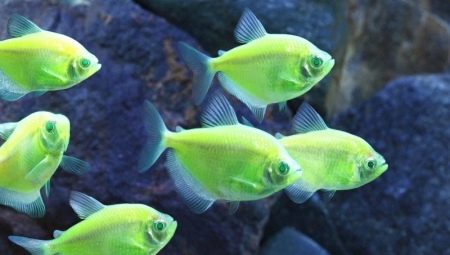
Aquariums grow and contain a wide variety of aquatic life. But if everyone has heard about goldfish and guppies, then the caramel thorn is much less known. This does not mean, however, that she deserves less attention.
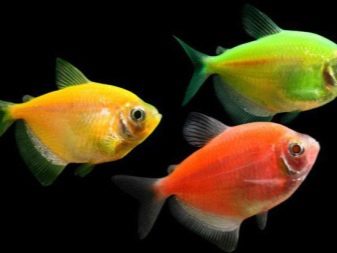
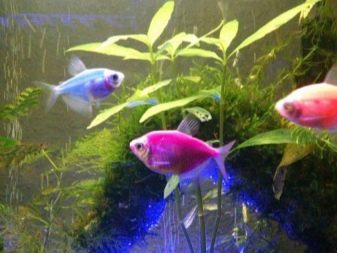
Description
Thornsia caramel has a size of no more than 0.06 m. In this species, the body resembles a rhombus. In addition to the sharpened fin located in the main part of the back, there is also a modest fatty projection on the tail. The fin in the anal part is elongated and looks like a "skirt". All fins are partially transparent.
A variety of colors is characteristic of this species:
- blue;
- pink;
- green;
- yellow;
- purple;
- red and other tones.

Among other aquarium fish, thorns are distinguished by 3 stripes running across the body. One is located near the eye, the other in the region of the gills, and the third exactly in the middle of the body. Thorns are distinguished by both physical activity and peacefulness. Only occasionally do they bite the fins of other individuals.
In the aquarium, as well as in natural conditions, these fish are grouped in flocks of 8 or more. They live for about 3 years. According to biologists, thornsia belongs to a large group of haracin fish. It includes over 160 species. Compared to the natural version of thorns, caramels are characterized by weaker immunity.
In European countries, thorns appeared in the 1930s. In 1946, they were brought to us. Over the past time, this species has become so common that now you can purchase it at any pet store.
It is curious to note that many modern people do not really appreciate such an achievement.There are even whole movements of opponents of the painted fish.
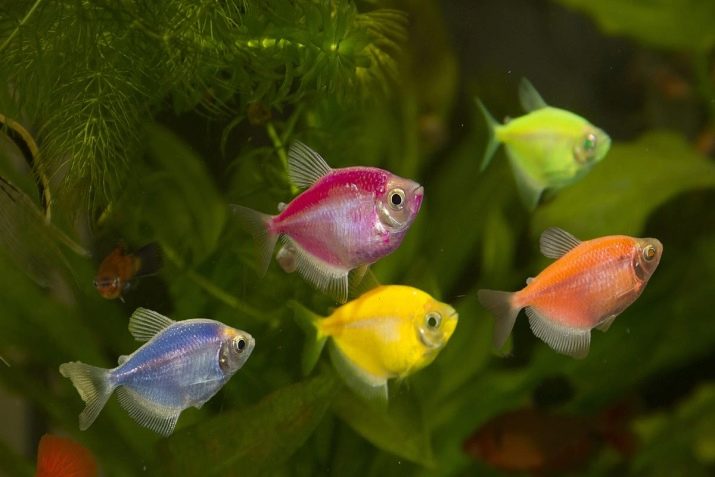
Thorns originate from the rivers of South America. Most of the colored specimens, however, come from special fish farms. Almost all of them are concentrated in Vietnam. Long-distance travel additionally harms the health of caramels. Therefore, you have to prepare very carefully for their settlement in the aquarium and equip it according to all the rules.
As in many other cases, the technologies of genetic modification began to be used in the breeding of thorns. It is this approach that allows you to achieve red, green, blue and yellow. Although conventional chemical techniques continue to be applied.
It should be noted that the coloring does not affect the tail and fins. Both retain the usual black or dark green tone; the dark outline of the lower long fin gives rise to the alternative name of the species - mourning tetra.
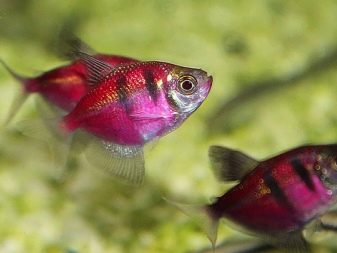

Varieties
It should be emphasized that all these fish are colored artificially. This makes it possible to give them extremely varied tones. However, even the best and most carefully selected paints are harmful to health. The lifespan of any colored specimen is shorter than that of a naturally developing one. The classic version of the caramel thorn is colored pink.
It is also the most demanded type. Albinos are white, with a slight pinkish tint, color. And veiled thorns are found very widely in Europe. True, in other regions of the world they are very rare, due to the difficulties of breeding. Sometimes there are also black individuals.

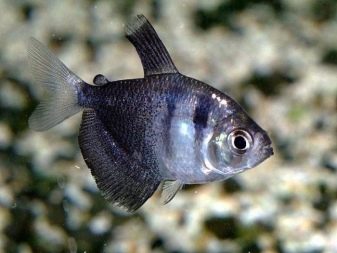
Compatibility
As practice shows, thorns get along in an aquarium with almost any other types of fish. But this requires careful care, because without it, aggressiveness can be very noticeable. Zebrafish and black neons are considered good neighbors. Caramels are also compatible with cardinals. You can try to breed other fish together with them, the main thing is that they also lead an active lifestyle.
Important: caramels do not go well with animals that are aggressive themselves. Therefore, not all activity in this regard can be welcomed. “Neighbors” should not have veil fins.
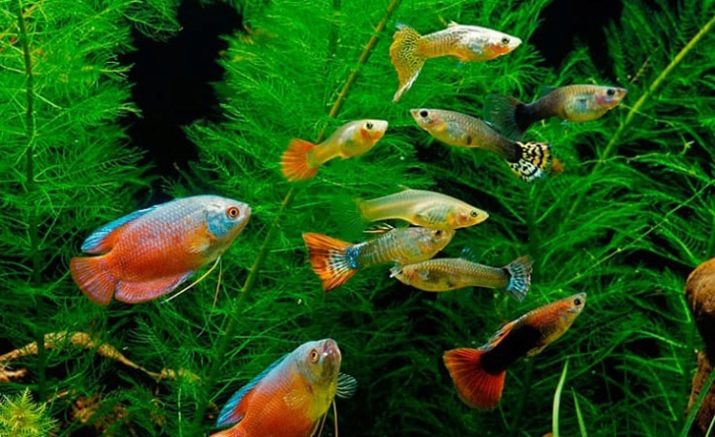
In addition to the listed types of fish, you can combine thorns with:
- petsilia;
- molliesia;
- barbus;
- iris;
- plecostomus;
- tetra;
- ancistrus;
- corridor.
Caramel thorns are poorly compatible with decorative varieties. Such fish are often attacked. In turn, the caramels themselves can suffer from cichlazomas and astronotuses. There will be no fatalities, but injuries will appear constantly. When a large flock is formed, the thorns will communicate with each other and ignore most of the other inhabitants.

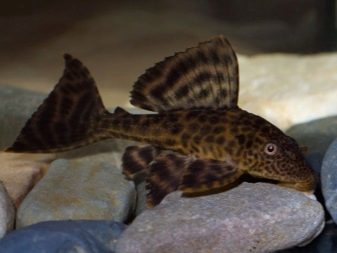
Growing conditions
Caramels are not particularly whimsical. However, in comparison with unpainted specimens, they require more complex care. It is imperative to provide access to clean water. The conditions in the aquarium must be stable. Only if this requirement is met will any problem be excluded.
Caramel thorns can be kept in a medium-sized aquarium. A normal sized swarm requires a tank with a capacity of at least 60 liters. Another indispensable moment when keeping this species at home is the organization of shelters. The necessary shelters are diverse: these are grottoes, and ordinary stones, and driftwood, and pipes, and ceramic pots.
Since the fish are very active, they should have enough room to swim freely. The water in the aquarium should be kept at a temperature of at least 22 and no more than 28 degrees. The permissible acidity index is from 6.5 to 8.5 units. The water should not move too fast, but stagnation is also unacceptable. Important: the presence of mineral salts is not allowed (only fresh water can be added).
The rigidity of the aquarium environment is strictly limited - from 5 to 20 dGH.Every 7 days, it is required to replace 25% of the total volume of water. It must be defended and have standard parameters. Also, the soil should be siphoned weekly, otherwise the quality of the environment will be too low for thorns.
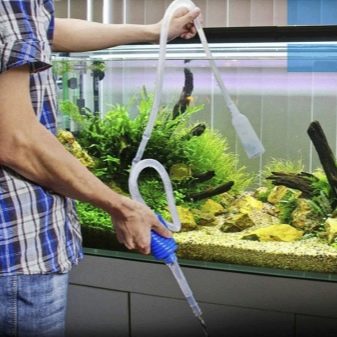

Caramels definitely need a lot of plants. "Hide and seek" in thickets is a natural behavior for this species. Fish should be kept in dim light. Therefore, among aquatic plants, only shade-tolerant ones are suitable, such as:
- limnophil;
- cryptocoryne;
- urut (pinnate);
- moss of any kind;
- fern;
- anubias.
The soil should be dark in color. It is allowed to use both sandy and coarse soil. The thorns themselves will not be buried in the bottom - they mainly float in the middle and upper tiers of the aquarium. Filters can be taken and simpler, without relying on a strong flow of water. A compressor is also required, but a heater will only be required if the aquarium will be in an unheated room.
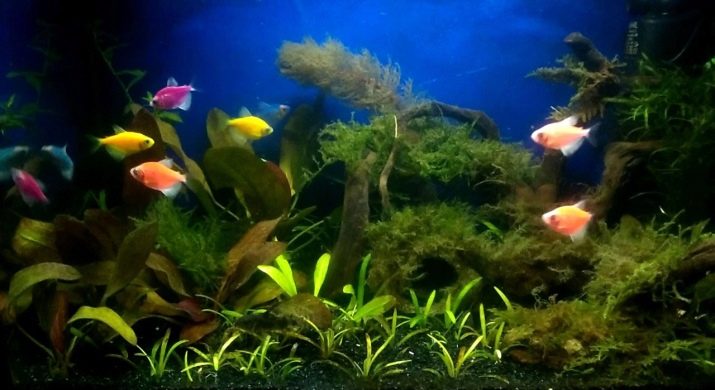
Lighting is organized as follows:
- provide subdued light;
- at night, the lamps are turned off (the lamp should not work continuously);
- limit to a minimum the sun's rays on the walls of the aquarium.
If the aquarium is poorly maintained, fish can be poisoned or suffer from hypoxia. You can also be afraid of the occurrence:
- bone disease;
- microbacteriosis;
- ichthyophthiriosis;
- oodiniumosis.
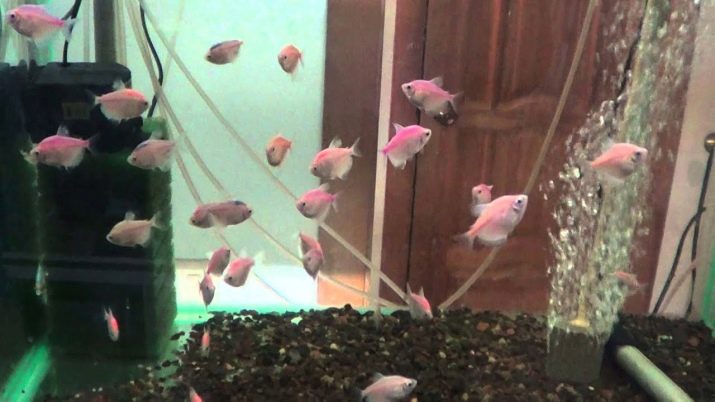
The best prevention of such ailments, respectively, will be rational care according to all the rules. The diet is made as varied as possible. The soil is siphoned once a week, with the same regularity you will have to change the water. As often as possible, they check whether the fish are sick, and, if necessary, immediately start treatment. All new individuals are first placed in "quarantine", and only if the result is positive, they are released into the general aquarium.
You should not be afraid of any problems. Even novice aquarists, with due diligence, can easily cope with all the challenges that arise. When transferring purchased fish, water from the aquarium should be added to the transport package in limited portions, with an interval of 10 or 15 minutes. If you are too hasty, the thorns will become very stressed. Important: all new fish are placed in the aquarium at night when other fish are inactive.
It is advised to clean the aquarium with siphons with transparent inserts. Such a device greatly facilitates cleaning. But scrapers made of metal are categorically not suitable. If you need to reduce the pressure of water passing through the filter, it is mounted on the wide wall of the aquarium.
Tip: The caramels will look best if you create a dark or other monotonous background.
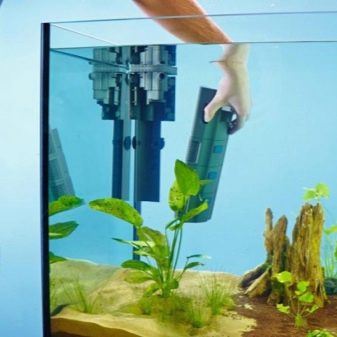

Ternetius is usually kept in aquariums with a capacity of 50-500 liters. Sometimes you can find indications that these fish, due to their vitality, can withstand temperatures of 18-28 degrees. But it is still better to maintain the standard value of 23 degrees. Then there will be no problems with other species that also populate the aquarium. Algae in the aquarium is distributed evenly, so that there are both areas for rest and places where thorns can show their activity.
Since caramels form flocks, it makes no sense to launch them into an artificial reservoir one by one. It is best to use 5-8 individuals at once. For your information: single fish do not just experience stress - they often show strong aggression. The color can be lost after several months of maintenance. All novice aquarists should be prepared for this.
Since caramels are contained in flocks of at least 5-8 pieces, and each individual should have 10 liters of water, the capacity of the aquarium should be at least 50 liters. But usually aquarists keep other fish with them. Therefore, in most cases, it is required to provide a tank capacity of at least 100 liters. You can place loose stones in the sand in the aquarium. The use of fallen leaves is also allowed.
The filtering and aerating equipment is of a standard sample. It is recommended to orient the water jets along the walls. For lighting, it is advisable to use not too powerful fluorescent lamps. With their help, daylight hours are increased to 10 hours and more. Attempting to install overly powerful luminaires may result in burns.
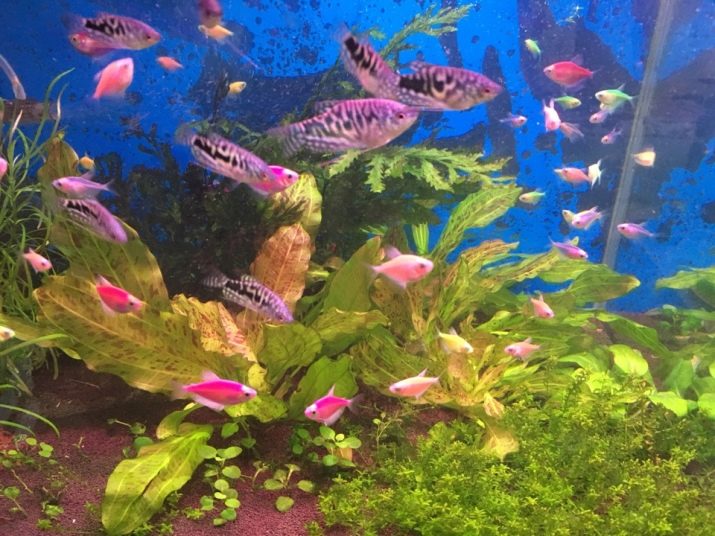
Feeding
Caramel fish are omnivorous. They can be given both dry and live food. Frozen food is fine too. Excellent options are:
- medium-sized bloodworm;
- daphnia;
- rotifer;
- Cyclops;
- brine shrimp;
- pipe maker.
The use of factory feed is also allowed. Still, you need to be careful with dry food. The pellets swell quickly after being eaten. As a result, swimming bladder problems can arise, and sometimes the fish dies altogether. What is beyond doubt is that dry food is not suitable for permanent feeding.
Small crustaceans must also be included in the diet, since without their chitin, the digestion of thorns will be unbalanced. Feed should be dispensed 1 or 2 times a day. They fall asleep just enough so that everything is eaten in 1-2 minutes maximum. Live food needs to be processed, and freezing is considered the best option in this regard.
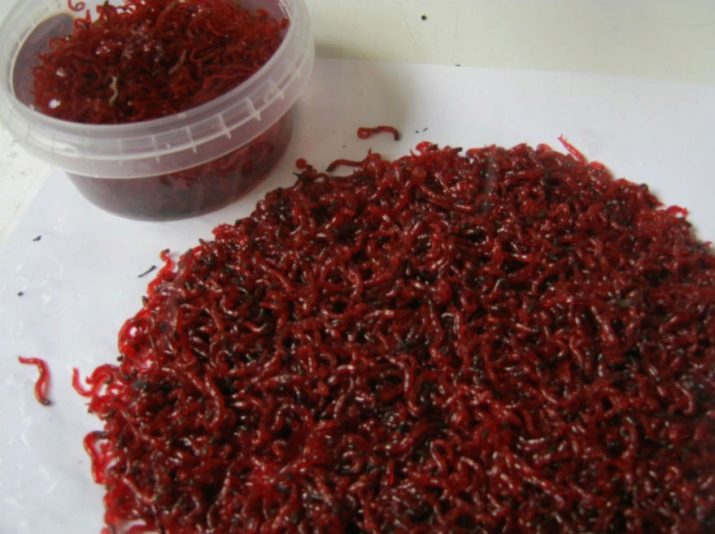
If for some reason this option is not suitable, you can use methylene blue or an unsaturated solution of potassium permanganate. When using dry food, it is recommended to carefully check the date of manufacture and store it in a closed container. Sometimes they even eat human food, such as:
- shrimps;
- salads;
- spinach;
- zucchini;
- cucumbers;
- fish fillet.
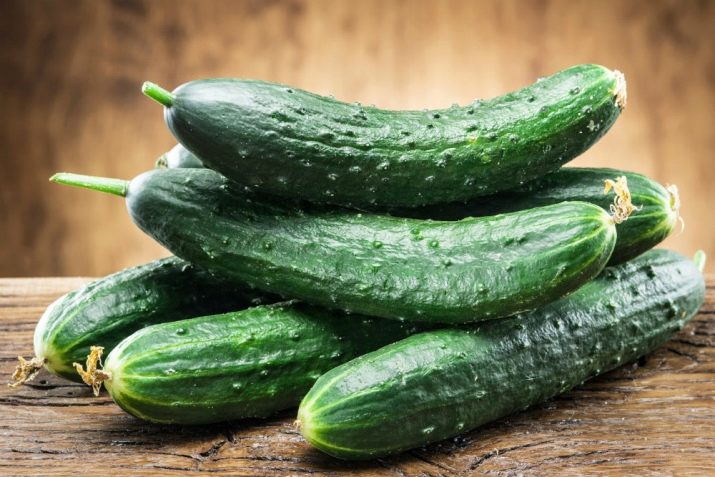
How to distinguish a female from a male?
There are no differences in color between them. Both in natural form and in "processed" they have completely identical colors. In females, the abdomen is larger and slightly rounded. You can also determine the gender by the type of fins. In females, it is rounded, and in males it stretches in length and has a characteristic sharpening.
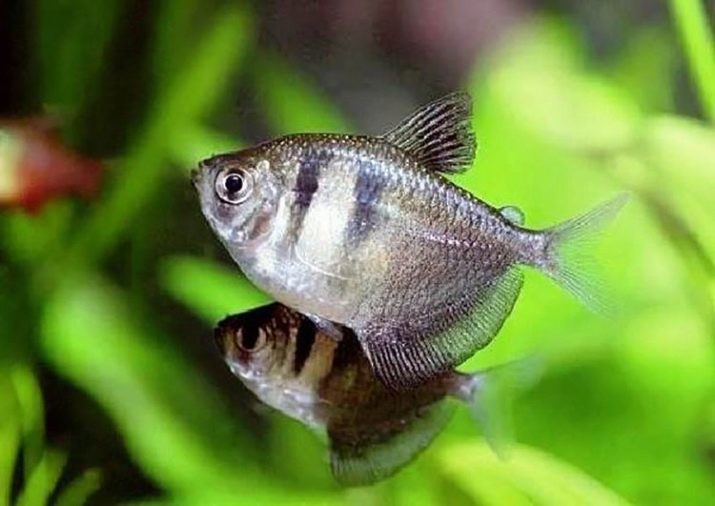
Reproduction
Anyone who decides to breed this fish should take into account that the coloring will not be genetically transmitted. Each new copy should be given additionally. The interval suitable for breeding is from 8 months to 2 years. Spawning is possible regardless of the season. For 1 pair of fish, spawning grounds with a volume of 30 liters are needed; if there are more individuals, then more spawning grounds are needed.
It is imperative to prepare shelters and plant plants. To make spawning more efficient, the water temperature is raised by 2 or 3 degrees. For this purpose, more protein foods are added than usual.
Be sure to filter and aerate the water, then the process will go right. Immediately after spawning, the "ancestors" are transplanted into another aquarium; incubation takes exactly 24 hours.
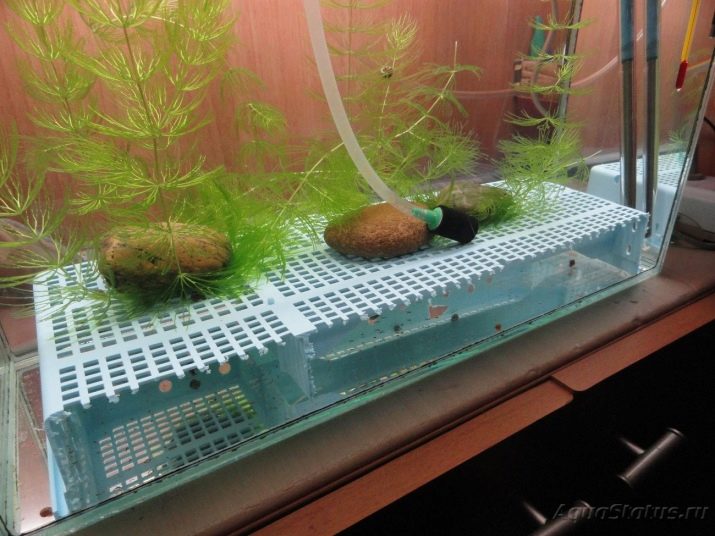
On the 3rd day and later, the fry should be fed:
- ciliates;
- crushed egg yolk;
- nauplii with brine shrimp;
- pounded feed, usually intended for adults.
In the spawning grounds, marsh grass and Javanese moss are used. When spawning occurs, thorns should be given live food. In the active phase, the fish swim very quickly. You can expect the appearance of fry in 6-7 days. They are given food once every 6 hours, ciliates and rotifers are used.
There is a special food for fry. It has all the substances necessary for the normal cultivation of thorns. Important: you need to follow the manufacturer's instructions as strictly as possible. Deviations from them can lead to very unpleasant consequences. With the help of mineral additives, it is possible to preserve the attractive color of the caramel thorns longer.
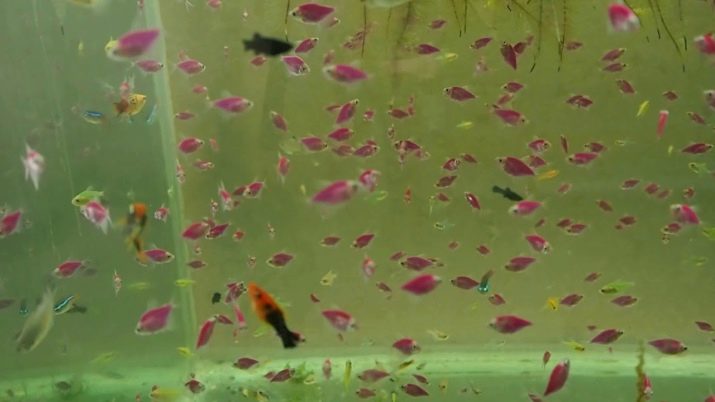
Sheets of paper can be used to create twilight in the spawning ground. The water level inside should be 0.07-0.08 m. It takes several days to settle the water before pouring it into this vessel. The water must contain a significant amount of oxygen. To saturate it with tannins, use:
- peat extracts;
- willow roots;
- alder cones;
- oak bark;
- weak black tea.
For more information on the features of these fish, see the next video.








